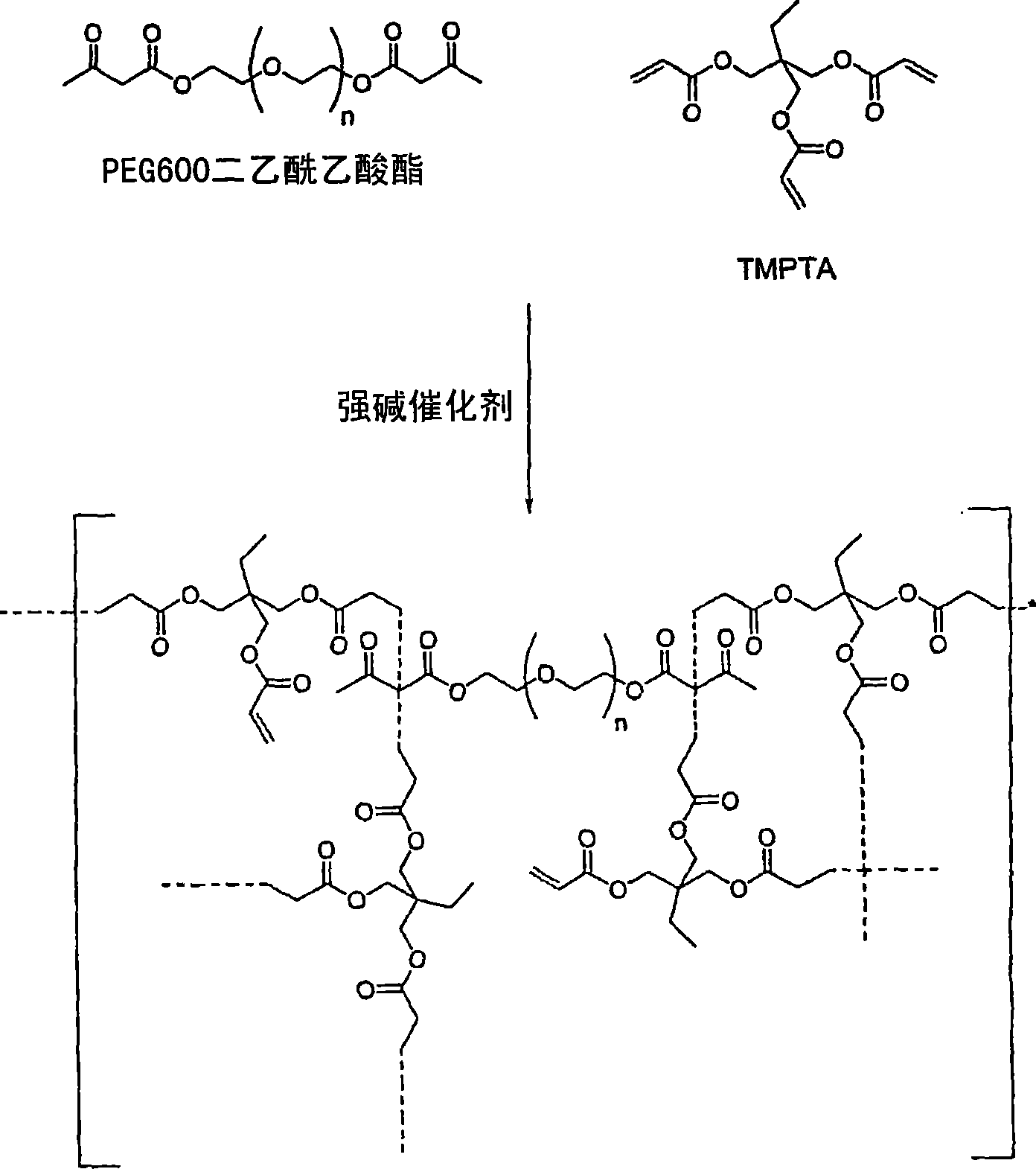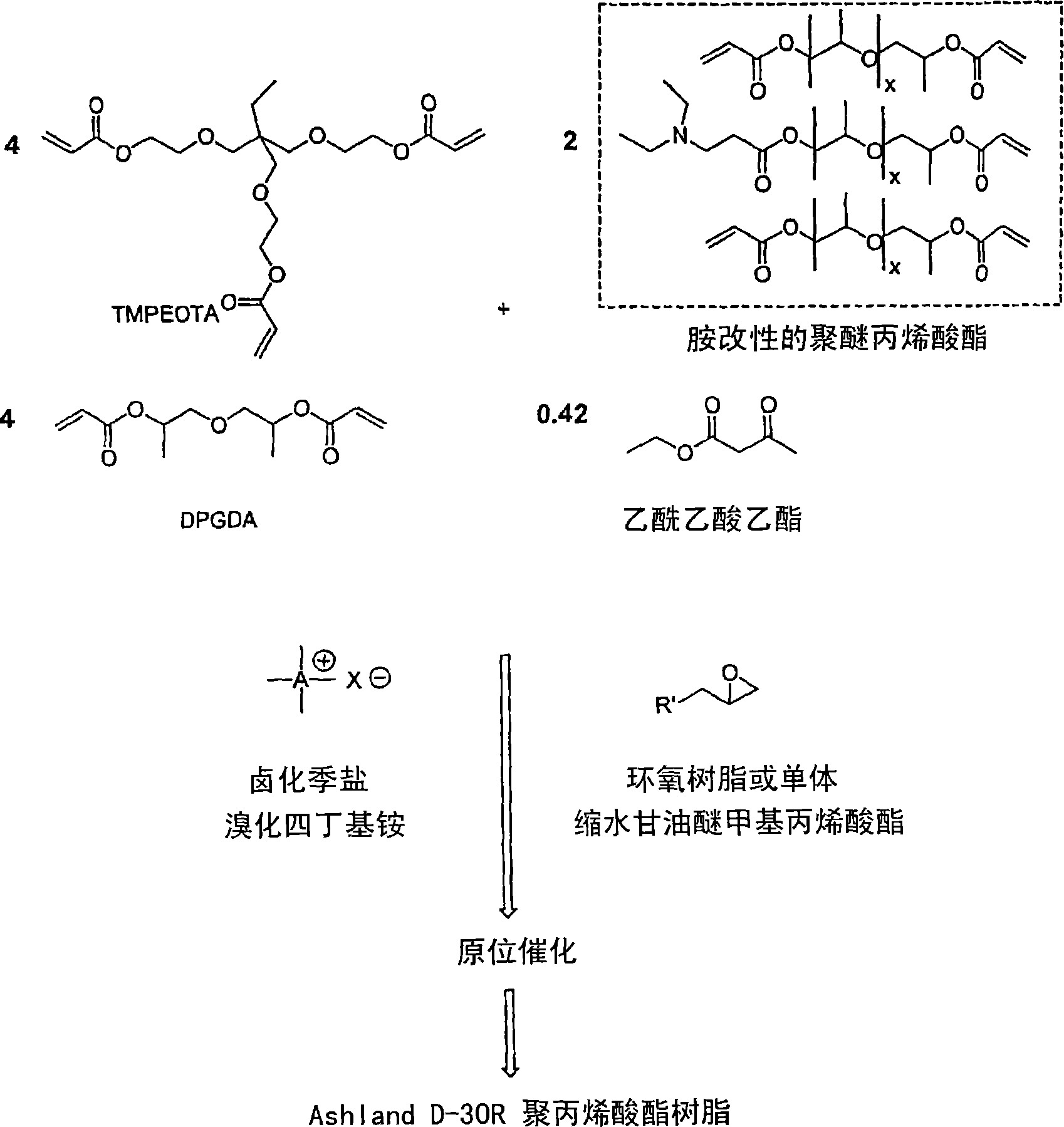Radiation-curable inks for flexographic and screen-printing applications from multifunctional acrylate oligomers
一种胶印油墨、环氧丙烯酸酯的技术,应用在油墨、应用、聚酯涂料等方向
- Summary
- Abstract
- Description
- Claims
- Application Information
AI Technical Summary
Problems solved by technology
Method used
Image
Examples
Embodiment 1
[0068] Example 1: White UV-curable screen printing ink
[0069] Michael Resin Pigment Dispersion 30-w-051903-05. White pigments were ground using a 3-roll mill in the dispersion resin. A preferred embodiment uses the oligomer Ashland D-30R as the dispersion resin. Other Michael dispersing resins are suitable for use in the inks of the present invention. A preferred Michael resin-pigment dispersion (grind formulation) for white inks comprises 45 parts by weight of Michael oligomer Ashland D-30R and 105 parts of DuPont R-706 white pigment. The resin may suitably comprise from about 10 parts to about 75 parts by weight. The pigment may suitably comprise from about 10 parts to about 90 parts by weight. Michael dispersion resins and pigment dispersions are disclosed in co-pending application Serial No. (not yet assigned, Attorney Docket No. 20435 / 0151), the entire contents of which are incorporated herein by reference for all purposes.
[0070] Non-limiting examples of suitabl...
Embodiment 2
[0083] Example 2: Yellow UV-curable screen printing ink
[0084] Dispersion 30-y-051903-02. Form the Michael resin-pigment dispersion as above for the white ink. A preferred pigment (YE1400DC) was milled in Ashland D-30R resin using a 3-roll mill. The preferred weight ratio is 102 parts resin to 48 parts pigment. For yellow inks, the ratio of resin can vary from about 30 to about 80 parts. The number of parts of pigment can vary from about 20 parts to about 50 parts. As noted above, Ashland D-30R is the preferred dispersion resin, but other Michael dispersion resin formulations are also suitable.
[0085] Yellow Ink Screen-y-052703-01. The dispersion can be thinned or diluted with the appropriate screen let-down resins of the invention and additives to obtain the desired ink formulation. The viscosity of the formulation was measured and considered acceptable as long as it was within 10% of the standard yellow ink formulation. The inks were screen printed onto various su...
Embodiment 3
[0088] Example 3: Red UV-curable screen printing ink
[0089] Dispersion 30-R-051903-04. A preferred dispersion of red ink is formed by grinding red pigment (LR-1392) with Ashland D-30R dispersion resin using a 3-roll mill. A preferred dispersion (30-R-051903-04) comprises, in parts by weight: 97.5 parts of resin 6923-30, 7.5 parts of TMPEOTA (as diluent monomer) and 48 parts of red pigment LR-1392. Suitably, the dispersion of red ink may comprise from about 20 parts to about 75 parts of dispersing resin, from about 0 parts to about 10 parts of diluent monomer, and from about 20 parts to about 50 parts of red pigment.
[0090] The composition of the dispersion resin may vary as described above. Non-limiting examples of suitable diluent monomers include: ethylene glycol diacrylate, propylene glycol diacrylate, diethylene glycol diacrylate, dipropylene glycol diacrylate (DPGDA), triethylene glycol diacrylate, Tripropylene Glycol Diacrylate, Tetraethylene Glycol Diacrylate, Te...
PUM
| Property | Measurement | Unit |
|---|---|---|
| molecular weight | aaaaa | aaaaa |
Abstract
Description
Claims
Application Information
 Login to View More
Login to View More - R&D
- Intellectual Property
- Life Sciences
- Materials
- Tech Scout
- Unparalleled Data Quality
- Higher Quality Content
- 60% Fewer Hallucinations
Browse by: Latest US Patents, China's latest patents, Technical Efficacy Thesaurus, Application Domain, Technology Topic, Popular Technical Reports.
© 2025 PatSnap. All rights reserved.Legal|Privacy policy|Modern Slavery Act Transparency Statement|Sitemap|About US| Contact US: help@patsnap.com


